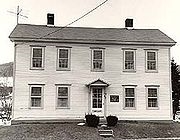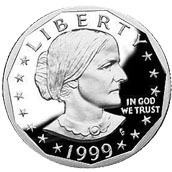 |
| This is a picture of Susan in her early years. (AOL images) |
I think a hero is someone that we look up to for answers and admire in our own unique way. Everybody has a hero whether that person is real or not. Each individual also looks up to heroes in different ways. For example, if a young boy’s hero is a professional soccer player, that boy might think that this soccer player is a hero because he/she is an awesome soccer player. Another more older man might only look up to the same soccer player because he/she helps charities for the less fortunate kids around the world. Heroes also inspire us in different ways. They can inspire us to try new things or take on a assignment that you’ve never done before, and even look at things in different ways. It all depends on who our hero is. Heroes can create hope for everyone too. For example, if your hero is a firefighter we can hope that they will save us if we are stuck in a dangerous or even tricky predicament.
 |
| This is where Susan gew up in her childhood (Wikipedia) |
My hero is Susan B. Anthony. Her full name is Susan Brownell Anthony. Susan was born February 15, 1820 in a large house near Adams, Massachusetts, in an area known as West Grove. Susan had five younger siblings, named Hannah, Daniel, Mary, Eliza, and Jacob. Susan had one older sibling, Guelma. The seven children were all born to their father, Daniel and Lucy.
 |
| This is the American dollar coin. (Wikipedia) |
Susan fought for many things in her life. The biggest accomplishment that Susan achieved was organizing and becoming the president of the National Women’s Rights Convention. The Susan coin was only put in mint for four years: 1979-1981, and the year 1999. This coin was printed only in the USA Suffrage Association, NWSA which was later changed to the American Women’s Suffrage Association, AWSA, finally changed to the National American Women’s Suffrage Association NAWSA. Of course Susan couldn’t have done this all on her own. Her good friend Elizabeth, her mother, her teacher Mary Perkins, her brother Daniel, and her sister Mary, all helped Susan accomplish what she did and inspired her to take on whatever she she thought possible. Susan’s incredible speeches and ideas were responded to 14 years, five months, and five days after she died, when the 19th amendment was passed allowing women to vote. In 1979, Susan’s face was printed on the U.S. dollar coin.
Susan B. Anthony has inspired me to take on any challenge that is put in front of me and made me believe that you shouldn't give up until your job is done if you really support something. She also inspired many women around the world by standing up for what is right. I think Susan B. Anthony is a great example of a hero because she defines courage, persistence, and respect. Susan B. Anthony is a great example of who there can be a hero in all of us. She stood up for what was right and didn't step back until she accomplished her goal. I believe there is a hero in all of us. We do things every day that are hero-like. Whether it’s helping your friend study for the next major exam, recycling your next juice box, or preventing women from being treated unfairly. We all have that special power of becoming a hero, so why don’t we use it and see how our world can change.
Susan developed the skills of reading and writing at the very early age of three. When Susan was only six years old the family left their West Grove home and moved to Battenville, New York. With the whole family settled in Susan was sent to learn at school. Though she was sent to learn, her teacher refused to teach Susan long division because of her gender. Because Susan was receiving poor instruction at school, her father, discontinued her education at that specific school and very quickly placed Susan in a group home school. There, one of the teachers, Mary Perkins, enlightened Susan’s interests on women equality. Susan was only 16 in the year 1836, when she filled two boxes of petitions opposing slavery for the New York anti-slavery and temperance/resistance movements, even though there was a law against such things. During the Panic of 1837, Susan’s family was so deep in financial problems that they had to auction off everything that they owned. Luckily Susan’s uncle, Joshua Read, bid the highest on the family’s belongings and Susan’s family received all of the auctioned belongings back.
The Anthony family moved again to another place in the state of New York in the year 1839. During this time, Susan left home and went to work to help pay off her father’s debts. Susan taught at two schools: Eunice Kenyon’s Friends’ Seminary and the Canajoharie Academy. While Susan taught at the Canajoharie Academy she became the headmistress of the Female Department. Susan also fought for the right of women teachers being payed the same wages as male teachers. During this time female teachers were payed four times less than male teachers. In 1849 Susan moved back to the family in Rochester, New York. Susan was considered a major part in this movement because of what she did.
At the age of 29, as the secretary for the Daughters of Temperance, Susan spoke out against alcohol abuse. Susan was in the public limelight because of this speech. In the year 1851 Susan was introduced to a woman named Elizabeth Cady Stanton in Seneca Falls. Later Susan joined with Elizabeth and they organized the first women’s state resistance society. Throughout the course of Susan’s and Elizabeth’s lives the two traveled the United States and presented speeches advocating that men and women should be treated equally. Then, in 1852 Susan attended the third annual National Women’s Rights Convention. This convention was held in Syracuse, New York. At this particular convention Susan gained a huge amount of popularity as she was now seen as a great public advocate for women’s rights.
Also, in the year 1856 Susan was recruited for the American Anti-Slavery Society to speak up for African- American women rights and freedoms. In 1869 Anthony found herself fighting for womens' rights when the American Equal Rights Association finally granted suffrage (voting) to the African American men, but not to the women of any race that lived in America. Also the year 1869 Susan and her long time friend Elizabeth published a journal named “The Revolution.” In this journal they promoted African American and American women’s rights to suffrage and equal pay. In 1872, Susan was arrested for illegally voting in that year's election. Her sentence was a fine. While Susan was in court she was able to express her views about women’s rights and suffrage laws to a bigger audience than she ever had presented to before.
Susan died in Rochester, New York in the year 1906, at the age of 86 in her house and was later buried in the Mount Hope Cemetery.
Page created on 4/28/2009 12:00:00 AM
Last edited 4/28/2009 12:00:00 AM
Lewis, Jone Johnson. "about.com." [Online] Available http://womenshistory.about.com/od/anthonysusanb/a/anthony.htm.
unknown, unknown. "Susan B. Anthony Biography." [Online] Available http://www.answers.com/topic/susan-b-anthony.
unkown. "AOL Images." [Online] Available http://www.aol.com.
unknown. "Susan B. Anthony." [Online] Available http://en.wikipedia.org/wiki/Susan_B._Anthony.
